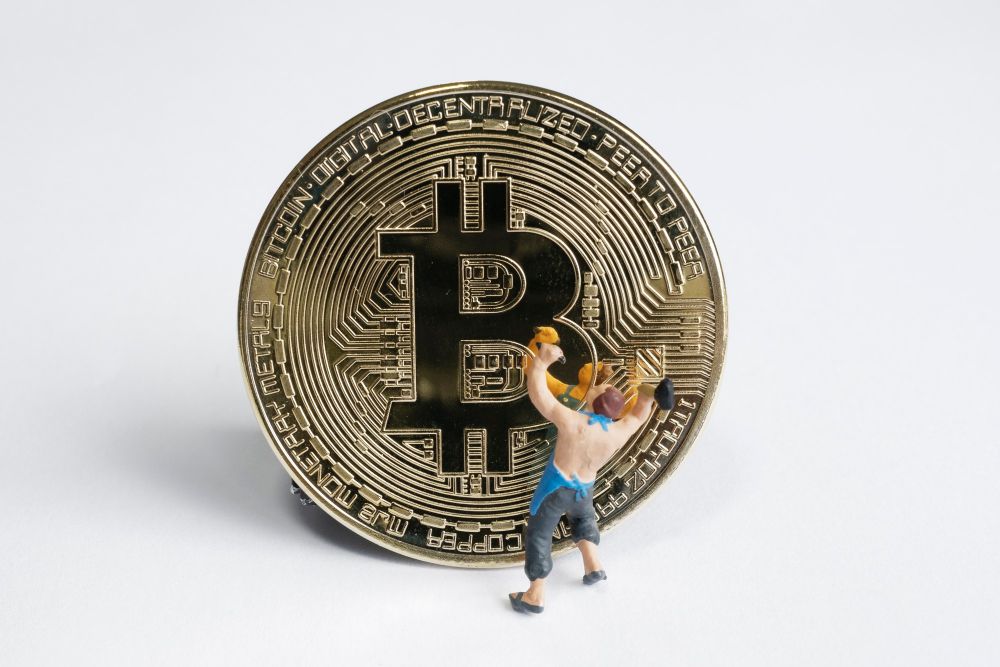Mining is the process of checking and approving transactions on the blockchain. It’s also the way that new units of a cryptocurrency are made. Miners use a lot of computer power to do their work, but this is what keeps a blockchain network safe. Miners who are honest and do a good job are rewarded with new cryptocurrencies and transaction fees for their work.
Explain the process of mining.
As new transactions are made on the blockchain, they are sent to a group of computers called a memory pool. A miner’s job is to check that these pending transactions are valid and put them into groups called blocks. You can believe a block as a page in the blockchain ledger where several transactions are recorded.
More specifically, it is the job of a mining node to pull unconfirmed transactions from the memory pool and put them together into a candidate block. The miner will try turning this possible block into a valid, confirmed one.
But to do that, they must figure out how to solve a hard math problem. This takes a lot of computing power, but when a block is successfully mined, the miner gets a block reward, which is made up of newly created cryptocurrencies and transaction fees. Let’s learn more about how mining works.
Step 1: Hash transactions
The initial step in mining a block is to take pending transactions from the memory pool and put them one by one through a hash function. When we put a piece of data through a hash function, we get a hash, a fixed-size output. In the setting of mining, the hash of each dealing is a string of numbers and letters that acts as an identifier. The transaction hash is a number that shows all of the information in that transaction.
The prospector adds a traditional transaction in which they transmit themselves the block prize. This is in addition to hashing and listing each transaction individually. This transaction, called the coinbase transaction, is what makes new coins. Most of the time, the coinbase transaction is the first to be recorded in a new block, followed by all the pending transactions they want to validate.
Step 2: Create a Merkle Tree
After each transaction has been hashed, the hashes are put into a Merkle Tree structure. The Merkle Tree is also called a hash tree. It is made by putting the transaction hashes into pairs and then hashing them. The new hash results are then put into pairs and hashed again. This process is recurring until only one hash remains. This last hash is called a root hash or Merkle root. It is the hash that represents all the other hashes that were used to make it.
Step 3: Finding a good block header
Each block has a unique hash because each block has a block header that acts as an identifier. Miners make a new block’s hash by combining the previous block’s hash with their candidate block’s root hash. But besides these two things, they also need to add something called a nonce. So, when a miner wants to make sure their candidate block is valid, they need to put the root hash, the hash of the previous block, and a nonce through a hash function.
The objective is to come up with a valid hash. The root hash and the hash of the past block can’t be changed, so miners have to change the nonce value many times until they find a valid hash. For the output to be valid, it has to be less than a certain target value set by the protocol. In Bitcoin mining, the block hash must begin with a certain number of zeros. We call this mining difficulty.
Step 4: Sharing the mined block
As we just saw, miners have to hash the block header many times, using a different nonce value. They do this work repeatedly until they find a good block hash. The miner who found it will then tell the network about his block.
All the other nodes will check to see if the block and its hash are valid, and if they are, they will add the new block to their copy of the blockchain. At this point, the applicant block turns a confirmed block, and all miners move on to the next one. All miners who didn’t find a valid hash in time throw away their candidate block, and the race to find a valid hash begins again.
Mine difficulty change
The protocol regularly changes how hard it is to mine so that the rate at which new blocks are made stays the same. This makes it easy to plan for when new coins will be made. The difficulty changes based on how the network uses much computing power. As a result, the hashing difficulty will increase every time a new miner joins the network, and competition increases.
This will keep the average block time from going down. If, on the other hand, a lot of miners leave the network, the difficulty of hashing will go down, making it easier to mine a new block. With these changes, the block time stays the same, no matter how much hashing power the network as a whole has.
What happens if you mine two blocks at once?
Sometimes, two miners broadcast a valid block simultaneously, giving the network two correct blocks. The next block is then mined based on the received first block. This causes the network to split briefly into two various blockchains.
The race between these two blocks will keep going until the next block is mined on top of either of them. When a new block is mined, the winner will be the block that came before it. The block that is left behind is called an orphan block or a stale block. All miners who chose this block have to switch back to mining the chain of the winner block.
Can all cryptocurrencies be mined?
Bitcoin is the most well-known example of a cryptocurrency that can be mined, but not all cryptocurrencies can be mined. Proof of Work is an algorithm to reach a consensus (PoW).
Proof of Work (PoW)
Proof of Work (PoW) is the first way that Satoshi Nakamoto made the blockchain agree on something. It was first written about in the 2008 Bitcoin whitepaper. In a nutshell, Proof of Work (PoW) decides how a blockchain network can reach an agreement among all its distributed participants without the help of a third party.
It does this by requiring much computing power to discourage people from doing bad things. As we’ve seen, miners check that transactions on a PoW network are valid. Miners compete for the right to mine the next block by solving hard cryptographic puzzles with special mining equipment. When a good solution is found, the first miner to find it can add their block of transactions to the blockchain and get the block reward.
The value of crypto in a block reward is different on different blockchains. As of December 2021, miners on the Bitcoin blockchain can get 6.25 BTC as a block reward. Because of its halving mechanism, the amount of BTC in a block reward drops by half every 210,000 blocks or about every four years.
Conclusion
Mining is a key part of Bitcoin and other Proof-of-Work (PoW) blockchains. It’s one of the things that makes sure the network is safe and that new coins keep coming out at the same rate. Mining has both pros and cons. One obvious pro is that you could make money from the block rewards.
But profits from mining can be affected by several things, such as the cost of electricity and market prices. There’s no guarantee that you’ll make money, so before you start mining crypto, you should research and consider all the risks.


